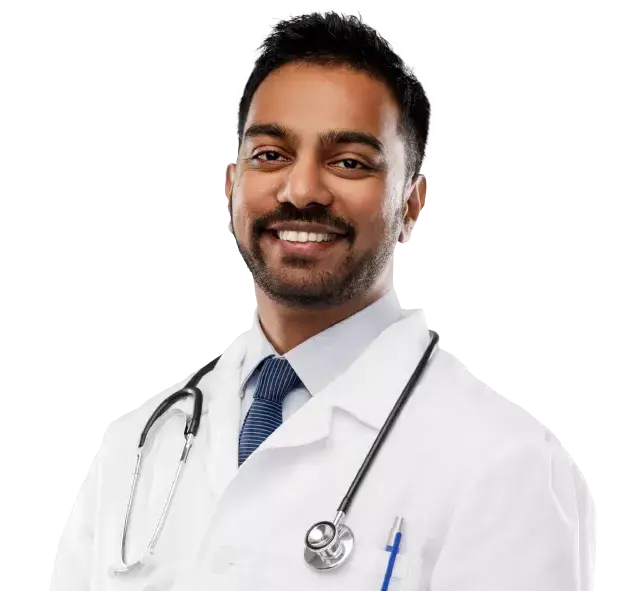
Select City
Cholesterol gallstones are solid deposits that form in the gallbladder and develop when there is an imbalance in the components of bile. Pristyn Care provides advanced laparoscopic cholecystectomy for cholesterol gallstones in India. Book a consultation today for proper guidance and undergo an effective cholesterol gallstone surgery.
Cholesterol gallstones are solid deposits that form in the gallbladder and develop when ... Read More




Free Consultation

Free Cab Facility

No-Cost EMI

Support in Insurance Claim

1-day Hospitalization

USFDA-Approved Procedure
Choose Your City
It help us to find the best doctors near you.
Ahmedabad
Bangalore
Bhubaneswar
Chandigarh
Chennai
Coimbatore
Delhi
Hyderabad
Indore
Jaipur
Kochi
Kolkata
Kozhikode
Lucknow
Madurai
Mumbai
Nagpur
Patna
Pune
Raipur
Ranchi
Thiruvananthapuram
Vijayawada
Visakhapatnam
Delhi
Gurgaon
Noida
Ahmedabad
Bangalore
Gallstones are pieces of solid material that develop in your gallbladder, a small organ under your liver. The gallbladder stores and releases bile, a fluid made in the liver, to aid in digestion. Bile carries wastes like cholesterol and bilirubin, which your body produces when it breaks down red blood cells.
There are two types of gallstones: calcium bilirubinate gallstone and cholesterol gallstone. Cholesterol stones are created when the bile is supersaturated with cholesterol, which may result from reduced bile acid production, increased cholesterol output in bile, or both.
Cholesterol gallstones are the most common kind of gallstones, accounting for about 80% of cases. They may not cause any symptoms in some people. However, when a gallstone blocks the bile duct, it can cause gallbladder attacks, which are indicated by sudden and intense pain in the upper abdomen, often accompanied by nausea and vomiting. In some cases, complications such as inflammation of the gallbladder (cholecystitis), pancreatitis, or blockage of the common bile duct can happen, requiring medical intervention.

Fill details to get actual cost
The diagnosis of cholesterol gallstones typically involves a combination of medical history, physical examination, and diagnostic tests. A healthcare professional will ask you about your symptoms and the history of health concerns that make you more likely to get cholesterol gallstones. The healthcare professional may also ask if you have a family history of gallstones.
During a physical exam, the healthcare professional examines your body to check for signs such as tenderness or pain in the abdomen. Diagnostic tests and procedures used to diagnose cholesterol gallstones and complications of cholesterol gallstones include:
The usual treatment for cholesterol gallstones is surgery to remove the gallbladder. Surgery to remove the gallbladder, called cholecystectomy, is one of the most common procedures to treat cholesterol gallstones. The gallbladder is not a crucial organ, which means you can live normally without a gallbladder. Surgeons perform two types of cholecystectomy:
Laparoscopic surgery is the most effective surgical option for cholesterol gallstones because it provides several advantages compared to open surgery. Here are some reasons why laparoscopic surgery is commonly preferred by healthcare providers for cholesterol gallstones :
Preparing for a cholecystectomy typically involves several steps to ensure a smooth and successful procedure. Here are some general guidelines to help you prepare for the surgery:

Diet & Lifestyle Consultation

Post-Surgery Free Follow-Up

Free Cab Facility

24*7 Patient Support
After undergoing cholecystectomy, it’s essential to follow post-operative care tips advised by your healthcare provider to ensure a smooth recovery. Here are some general tips to follow:
If cholesterol gallstones are left untreated, they can potentially lead to several complications and health problems. Here are some potential consequences of untreated cholesterol gallstones:
Cholecystectomy is considered a relatively safe procedure, but like all operations, there’s a small risk of complications. Here are some possible complications of cholecystectomy:
Recovery after cholecystectomy is generally relatively quick. Most individuals can resume their everyday activities within a week or two after laparoscopic surgery or a few weeks after open surgery. Pain and discomfort at the surgical sites are expected initially, but they improve with time. Your healthcare provider will provide specific instructions for postoperative care and pain management to support your recovery.
After a cholesterol gallstone removal surgery, it’s essential to follow a balanced and nutritious diet that facilitates healing and supports digestive health. Here are some dietary recommendations to follow:
Cholecystectomy eliminates the risk of developing new gallstones and gallbladder-related conditions such as cholecystitis or gallbladder cancer. However, it does not prevent the development of other conditions affecting the bile ducts or liver.
Cholesterol gallstone surgery is highly successful in treating gallstones and their associated symptoms. The success rate of the surgery is typically high, with most patients experiencing significant relief from symptoms after the procedure. The surgery effectively removes the gallbladder, eliminating the presence of cholesterol gallstones and preventing their recurrence.
Cholecystectomy is commonly performed laparoscopically, using just 3-4 small incisions. In most possibilities, these incisions heal properly, resulting in small scars that fade over time. The number and size of the incisions can differ depending on factors such as the surgeon’s technique and the patient’s anatomy. An open cholecystectomy may be necessary in some cases, resulting in a larger incision and scar.
The cost of a cholesterol gallstone removal surgery in India may range from Rs. 90,000 to Rs. 2,60,000. However, the cost of the surgery is not specific and depends on distinct factors like the location of the hospital where the surgery takes place, the number and size of the gallstones, doctor’s consultation and operating fee, the technique used to remove the gallbladder, etc.
Preeti
Recommends
Very smooth experience with pristyn made & surgery was done well.
PRAKASH CHOUHAN
Recommends
I went to may other clinics and consulted many doctors but Dr.Solved all my queries and doubts and made everything very easy for me, I felt I was in the right hand and indeed it was the well taken decision.
Firdouze
Recommends
Patient with Good consultant & counsel about the present status of mine..and well advised given to the patient condition
Niloufer
Just few weeks ago I had gall bladder laparoscopic surgery with Dr. Abdul Mohammed, he was so friendly through during the consultation and explained everything well in details, Thanks for pristyn care to recommend Amista hospital staff also so friendly and very good service so happy to have Amista hospital and thanks for pristyn care support team thanks to riwzan he help me starting of day till discharge and my surgery went successfully Alhamdulillah, I have recovered well now Highly recommend.
Deepak Kumar
Recommends
All good
Shakuntala
Recommends
I contacted pc for gallstone treatment and they did laparoscopic surgery. it was successful and i got relief. would recommend them.
.svg)
.svg)